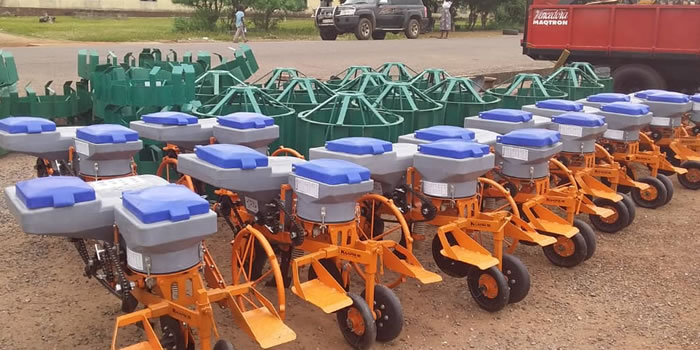

Industry of Employment
Industry refers to the type of product produced or service rendered at the respondents’ work place.
Table 4.4 shows that agricultural, forestry and fishing industry remains the largest employing 89.8 percent of the employed population. The next major industry in the District is manufacturing which accounts for 3.1 percent; and wholesale and retail; repair of motor vehicles and motor cycles employing 2.3 percent of the employed population.
With the exception of agriculture, forestry and fishing industry which has clear difference in terms of the proportion of males and females employed, there is not significant variation. The manufacturing industry employs 5.4 percent of the female workforce relative to 1.3 percent for males. The wholesale and retail (repairs of motor vehicles and motorcycles) industry employs 3.7 percent and 1.2 percent of the females and males respectively
Employment Status
Employment status refers to the status of the person in the establishment where he/she currently works or previously worked. Analysis of data on employment status indicates that more than half (54.3%) of the employed population are self-employed without employees (Table 4.5). Contributing family workers constitute 36.8 percent while employees form 2.9 percent of the employed population. Apprentices form an insignificant proportion (0.4) of the employed population in the District.
Employment Situation in the District
The economically active (employed and unemployed) population in the district is 13,644 which represents 88.5 percent of the population 15 years and older.
The population economically not active in the district is 11.5 percent of the population. A significant proportion (98.7%) of the population is employed one of the three major sectors of the economy. Less than 5 percent (1.3%) of the population is unemployed.
Almost 99 percent of the male population 15 years and older in the district are employed. The same proportion of the female population of similar age group is employed.
More than 95 persons of the male population is unemployed and more than 76 females are unemployed in the district. The major problem of the district in relation to employment however has to do with underemployment.
The sector of employment does not fetch enough income in terms of cash but food stuffs. Most of the employed are farmers who work as peasants and subsistent.
Employment is high for age groups 25-39 years and declines afterwards. As expected the economically not active is high among age groups 15-24 years. It also begins to increase after age 60 years and above.
Employment is lowest among age group 55-64 years while surprisingly it increases after age 65 and above. The possibility for such an occurrence could be attributed to the fact that the industry that employs the majority of the employed does not have a retirement age.
In the female economically active population, employment is high from age group 20 – 29 with marginally higher number than the male economically active group within the same age group. However, it declines thereafter recording lower numbers for age group 55 – 64 and increases slightly afterwards.
Comparatively employment is higher among the male population than the female population of the economically active group. Whereas formal employment pegs compulsory retirement at 60, the situation is different in the informal sector which is dominates the district economy.
Date Created : 11/24/2017 1:29:54 AM









 facebook
facebook
 twitter
twitter
 Youtube
Youtube
 +233 593 831 280
+233 593 831 280 0800 430 430
0800 430 430 GPS: GE-231-4383
GPS: GE-231-4383 info@ghanadistricts.com
info@ghanadistricts.com Box GP1044, Accra, Ghana
Box GP1044, Accra, Ghana